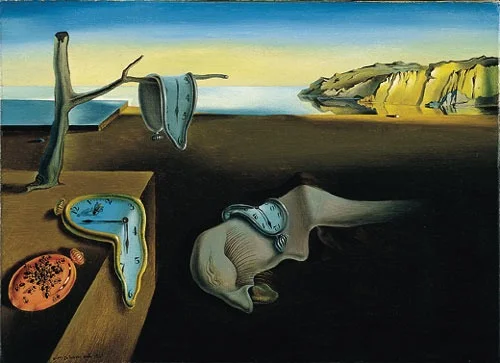Thermodynamics is the study of how the state of a large number of particles changes with time due to mechanical processes such as work, heat, and so on. The question, what causes heat between macroscopic objects?, is the subject of a branch of physics called classical statistical mechanics. According to this branch of physics and according to thermodynamics, a hot object and a cold object are composed of an immense number of “classical particles” whose classical states {\(\vec{R}_i, \vec{p}_i\)} evolve with time deterministically according to Newton’s second law. Heat is due to faster moving particles in the hot object colliding with slower moving particles in the cold object. In order to know the precise state of a hot object and a cold object, we would have to know the precise states {\(\vec{R}_i, \vec{p}_i\)} of every particle. But since the number of particles composing each object is so enormous, in practice it is impossible to fully specify the state of each system. To specify the state of each system we instead must use quantities such as temperature and pressure (as well as other quantities we shall introduce later) which are based on averages and probabilities. It should be understood that thermodynamics is just a theoretical scheme we use to describe a large number of the abstract things called particles. According to classical mechanics, whenever the size of an object is very small in comparison to the distances it traverses, we can model it as a particle and obtain predictions which reliably match experimental observations. Whenever we can model a large number of physical objects as the abstract things called particles, we can use thermodynamics and statistical mechanics to study them. Obviously, we can apply these two branches of physics to study the behavior of a large number of atoms or molecules.
(There are also not so obvious examples. We can, for example, over the scale of hundreds of millions of lightyears model entire galaxies as particles (infinitesimal point-masses) because the distances they are moving across is so much greater than the sizes of their internal dimensions. In my cosmology lectures, I apply thermodynamics to the vast number of galaxies over these immense distance scales and show that there is negative pressure. This negative pressure, when put into Einstein’s field equations (which are just the FRW equation), predict that all the galaxies should be flying away from one another.)
If we ignore the laws of thermodynamics then, according to classical mechanics, there is nothing preventing physical processes from running in reverse. For example, according to classical mechanics, there would be no law of physics preventing a shattered glass cup had fallen on the floor from spontaneously reassembling itself and moving back to its original position. Just as one could drop a ball from a certain height to the ground converting the ball’s initial gravitational potential energy \(PE\) into the kinetic energy and internal energy of the ball and ground, respectively, this process could occur in the reverse direction without violating any of the laws of physics (if we ignored the laws of thermodynamics). The internal energy in the ground could transfer into the ball transforming into kinetic energy in the ball thereby cooling the ground and giving the ball a velocity and then the ball could decelerate in the upwards direction converting its kinetic energy into potential energy. According to the laws of thermodynamics heat cannot flow from a hotter object (such as the heated ground) to a colder object (such as the ball); therefore the hot ground cannot cool by transforming its internal energy into the kinetic energy of the ball. A consequence of the second law of thermodynamics is that the energy-transfers and energy-transformations associated with physical processes can only occur in one direction.
According to the second law of thermodynamics, the fundamental quantity responsible for preventing physical processes from “running in the reverse direction” is heat (represented by the letter \(Q\)). Heat is not a state variable; rather it is a process. Whenever this process does not occur or is negligible, the laws of physics permit time-reversibility and for processes to occur backwards. Take for example a swinging pendulum where none of the pendulum’s energy is lost to friction due to heating its supports. It would of course swing back and forth forever. If we videotaped the swinging pendulum and ran the video tape backwards, then the reverse motion we would be watching would be permissible by the laws of thermodynamics (and all of the other laws of physics). When it comes to the motion of the planets in our solar system, heat is negligible and thus the planets could revolve around the Sun in the opposite direction without violating the laws of physics. We could, for example, have a solar system somewhere in the universe that is completely identical to ours with one exception—all the planets are going around the Sun in the opposite direction. Since enormous numbers of galaxies over very large distance scales don’t interact with one another (or anything else for that matter), they comprise an isolated system: there is no work or heat or any energy transfer mechanism acting on them. This fact (that there is no heat) means that the laws of relativistic physics are time-reversible. Hence, it was permissible for Lemaître to run the laws of physics backwards to see what our universe (over those large distance scales) looked like at earlier times. But whenever heat cannot be neglected, the laws of physics (and, in particular, the second law of thermodynamics) permit physical processes to happen in only one direction and strictly forbid time-reversibility.
This article is licensed under a CC BY-NC-SA 4.0 license.

